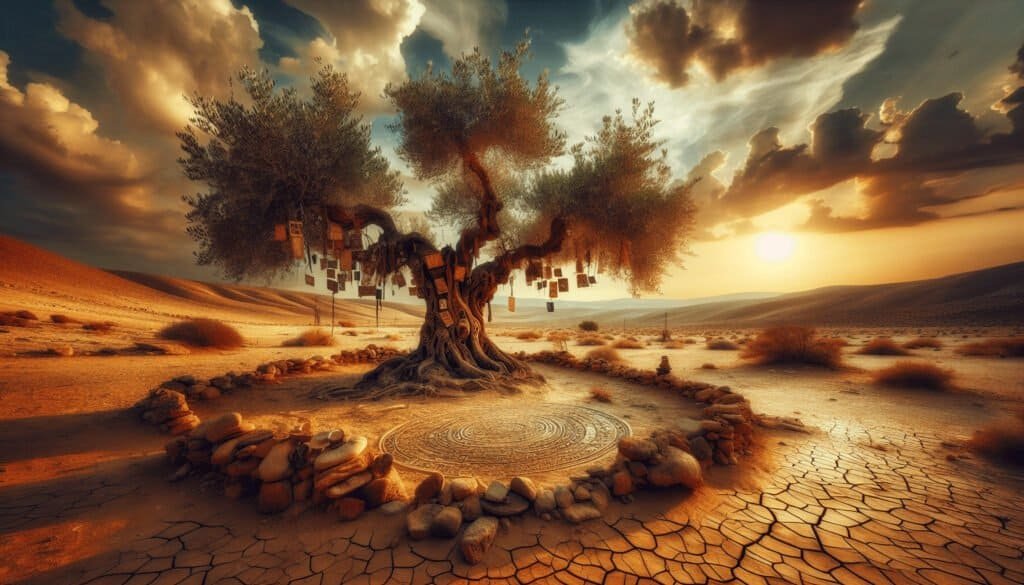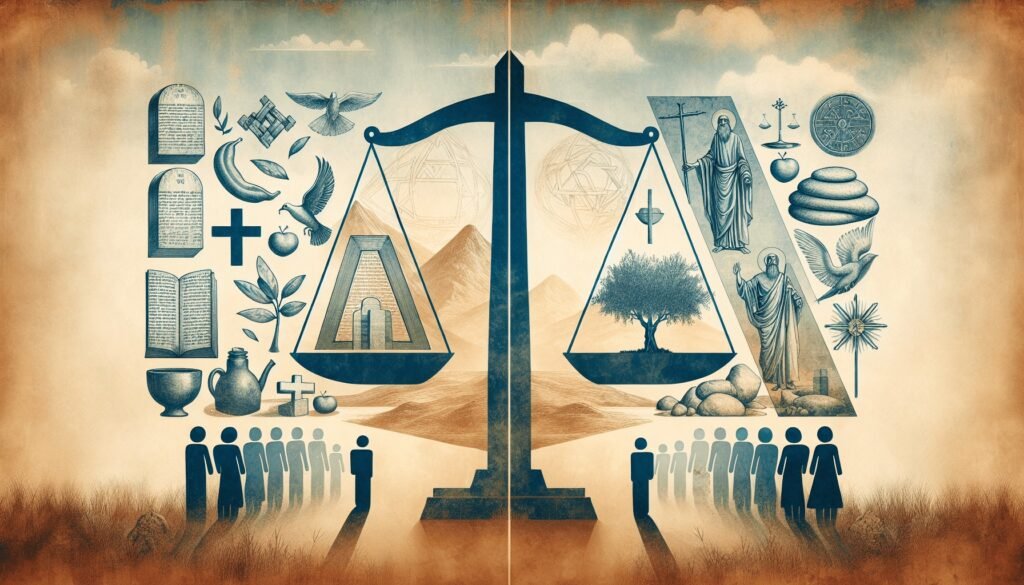What if you could think about worship not merely as a sanctuary experience but as a communal journey carved in the arid landscape of a drought-stricken land?
Understanding the Desert Context
You might already know that deserts can be hauntingly beautiful, but they also pose extreme challenges for life. When it comes to the concept of communal worship in these regions, understanding this environment is crucial.
Deserts, such as the Negev in Israel, have been inhospitable yet vital to human civilizations. Despite the challenges, communities have thrived here. The environment surges with both limitation and opportunity, and that’s where the idea of a “Desert Orchard Trough” takes root—literally and metaphorically.
The Symbolism of the Orchard
Picture an oasis, a verdant space in an otherwise arid region. An orchard symbolizes not just physical sustenance but also spiritual nourishment. You might think of orchards as places of gathering, where people come together to share in the fruits of their labor and the bounty of their environment.
In many traditions, orchards have been seen as sacred spaces, illustrating the connectivity between the Divine and the Earth. They speak of abundance, fellowship, and community—a pivotal component for worship, especially in a harsh climate.
Communal Worship Defined
When you think about communal worship, what comes to mind? You may envision a gathering of individuals unified by faith, celebrating rituals and traditions.
The Power of Togetherness
Communal worship forms a collective identity while forging deep connections amongst participants. During dry seasons where resources are sparse, this sense of community becomes even more essential. When individuals are drawn together for worship, they find strength and solace in shared beliefs, enhancing both their faith and the spirit of their environment.
Historical Precedents
Throughout history, we can trace numerous examples of communal worship in arid landscapes. You might consider the ancient Israelites in the wilderness, who pooled their resources and relied on one another during their long journey. The resilience displayed by these early communities offers a compelling model for how modern worship can adapt to similar challenges today.
Why Drought-Land?
Drought-land speaks volumes when it comes to spiritual significance. While physical drought is a harsh reality, it often mirrors emotional and spiritual barrenness. You might recognize that times of personal struggle can drive you closer to your community, leading to richer communal experiences.

Archaeological Insights
As you begin to explore the connection between drought, worship, and community, it’s essential to consider archaeological discoveries that paint a clearer picture.
The Role of Sites
Several archaeological sites, such as those found in the Levant region, showcase communal spaces in desolate areas where worship rituals took place. Remains of ancient altars, communal gathering places, and evidence of agricultural practices are critical in understanding how these ancient societies functioned despite environmental hardships.
Case Study: The Negev Desert
The Negev Desert offers a wealth of archaeological findings. Here, researchers have uncovered evidence of ancient agricultural systems that thrived against the odds. These findings suggest not only survival but a vibrant communal life anchored in shared faith and practices.
Scriptural References
As you dive into the world of communal worship rooted in scripture, consider how holy texts have shaped our understanding of faith practices in drought-prone lands.
Biblical Examples
In the Bible, stories of communal gatherings abound, many of which occurred in arid settings. Take, for instance, the Israelites’ experiences in the wilderness. They were often faced with both physical and spiritual droughts, yet they gathered to worship, finding strength in numbers.
Psalms of Ascent
The Psalms of Ascent offer poignant examples as these were sung by pilgrims traveling to Jerusalem for worship. The imagery of ascending hills amidst barren landscapes emphasizes the journey—both physical and social. It’s about moving upwards, seeking community despite the daunting terrain that lies ahead.
The Role of Rituals
Rituals serve a critical purpose in communal worship; they are a bridge between the congregation and the divine. These practices often revolve around significant cultural events, agricultural cycles, or spiritual milestones, all deeply embedded in a community’s shared history.

Theological Insights
Delving into theology, you might consider how different traditions interpret the experience of communal worship within arid landscapes.
Hope in Desolation
Many theological interpretations see arid lands as spiritually significant. Just as the desert strips away excess, bringing you to the essence of existence, communal worship can serve as a lifeline, offering hope and connection in seemingly desolate times.
The Covenant Theology
Covenant theology plays a significant role in understanding communal worship in dry regions. The relationships defined by God’s covenant often emphasize unity and collective well-being. The idea is that together, communities navigate drought with faith and a shared mission to embody love and stewardship for one another.
The Role of Music and Art
In communities facing scarcity, music and art become vital expressions of hope and unity. You might consider how songs sung during communal worship resonate deeply, often echoing themes of resilience and celebration, despite a harsh environment.
Cultural Significance
Taking this conversation a little deeper, the cultural significance of communal worship in arid lands contributes to a rich tapestry of practices and beliefs that provide context for modern applications.
A Melting Pot of Beliefs
Worship in drought-prone regions often becomes a melting pot of beliefs. For instance, various spiritual practices might intermingle as communities strive to find common ground and sustain each other through shared journeys.
Interfaith Worship Practices
The acceptance of interfaith practices highlights how communities can come together, even in challenging landscapes. When denominations share rituals, they find collective strength, resilience, and new understandings of faith, essential for survival in a challenging climate.
Modern Applications
As you reflect on how communal worship in drought-land can inform modern practices, consider what strategies might be adopted.
Innovative Worship Spaces
The concept of worship isn’t stagnant—it evolves to meet the needs of communities. For instance, communal gardens or eco-sustainable spaces can serve as sacred sites where worship merges with environmental stewardship.
| Worship Space Type | Description | Benefits |
|---|---|---|
| Community Gardens | Shared agricultural spaces for food production | Fosters community, supports sustainability |
| Outdoor Worship Events | Utilizing natural spaces for gatherings | Enhances environmental connections |
| Mobile Worship Units | Flexible structures that move to different locations | Accessibility for various community members |
Embracing Technology
With today’s technological advancements, you might find that worship can carry on even in challenging climates. Virtual gatherings, for instance, enable people to connect beyond physical limitations, fostering a sense of community even when individuals are miles apart.
Social Media as a Tool
Leveraging social media platforms for worship allows for connection and interaction, helping to bridge geographical gaps. This dynamic approach democratizes access to faith and spirituality, making communal worship more inclusive.
Summary
In summary, communal worship in drought-land showcases resilience, hope, and creativity amidst life’s arid challenges. You can see how ancient histories and modern strategies converge, leading to unique expressions of faith that grow from shared struggles.
Whether it’s through ritual, shared traditions, or innovative spaces, the principle remains: community sustains you, reviving spirits and enriching lives even in the most desolate landscapes. This deep sense of communion not only nurtures the soul but also serves to honor the enduring spirit of humanity, pulling you together across the barren expanses of life.
As you move forward, consider how you can cultivate your own communal practices, creating opportunities for connection in your life, especially in times of scarcity or spiritual drought. After all, it is often in the most challenging settings that you uncover the most profound community bonds and shared experiences.


